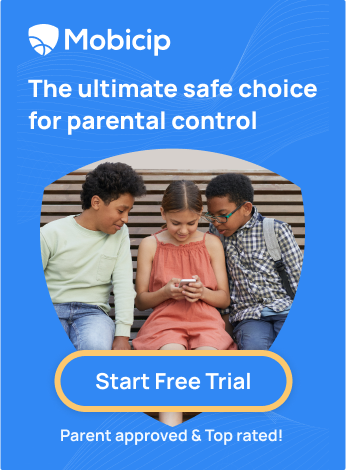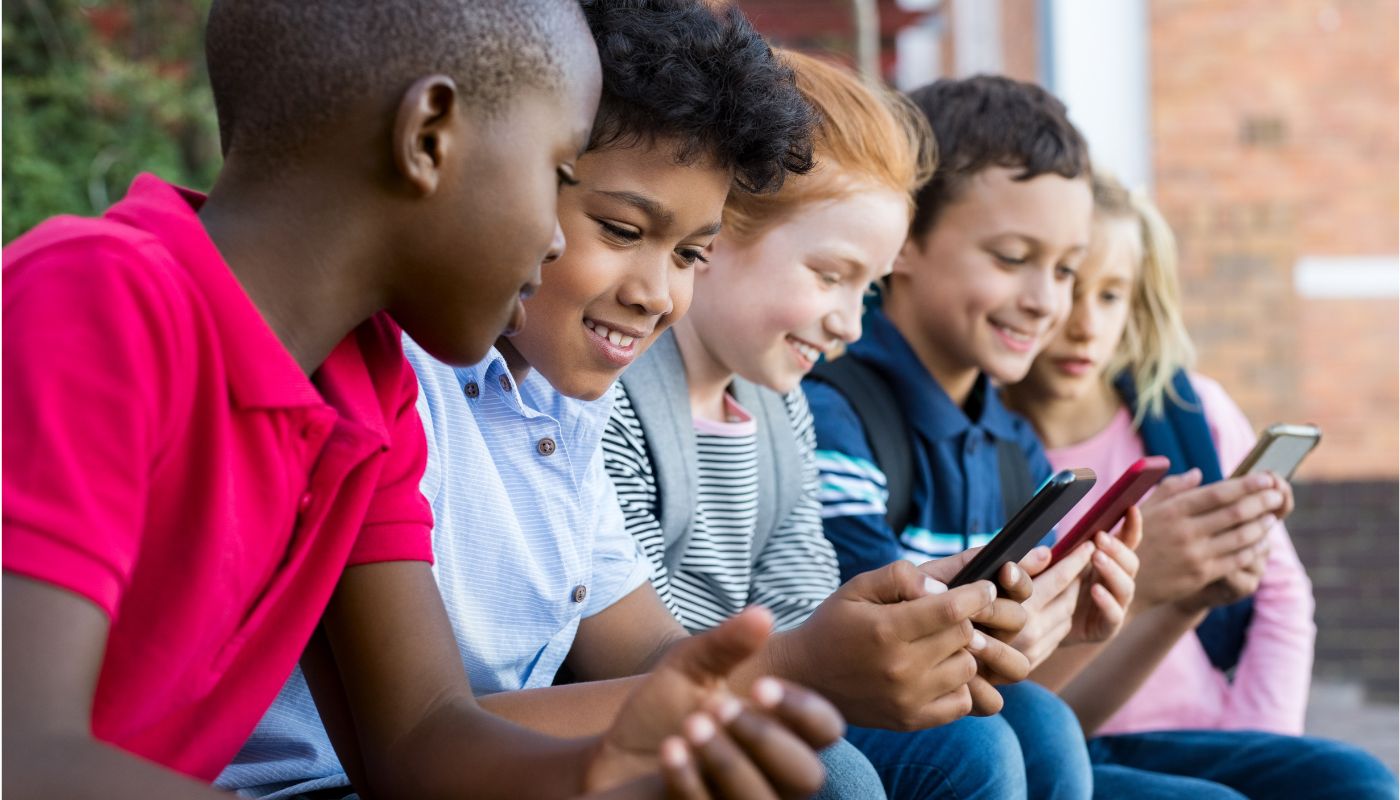From Strangers to Friends: Navigating Online Friendships for Tweens and Teens

The concept of ‘stranger danger‘ is deeply ingrained in us, and we’ve passed it on to our children. But now, they’re making friends with people they’ve never even met in person. It’s like the rules we grew up with are being flipped on their head, and it’s a situation that can make any parent feel uneasy and concerned.
We’re all about keeping our kiddos safe, right? And when it comes to online friendships, there’s always that nagging worry about who they’re talking to on the other side of the screen. Are they really who they say they are? It’s a never-ending game of “guess who,” and it can keep us up all night.
The Changing Landscape of Teen Friendships from Real-life to Online
It’s pretty fascinating to see how teen friendships have evolved over the years, especially with the rise of the digital age. Back in our day, making friends usually meant hanging out at the local diner or hitting up the mall together. But now? Well, things have changed quite a bit. One big shift is the prevalence of online friendships among teens. It’s not uncommon for kids to have buddies they’ve never met in person but chats regularly on social media or gaming platforms.
According to Pew Research, teenagers are more likely to hang out with their friends online every day than to meet them in person.

Image Source: Pew Research
Now, as parents, I think it’s essential to embrace this shift while also being cautious. Online friendships can be fantastic for connecting with people from different backgrounds and cultures, but ensuring our kids stay safe is important. You know, making sure they’re not sharing too much personal information and all that jazz.
Benefits and Risks of Online Friendships
Are online friendships dangerous? We have heard so much news where online friendships have led to fatal ends for many teens. Or is there any good in it? Let’s find out the bad and the not-so-bad of digital friendships.
Benefits of Online Friendships:
Connecting with Diverse Peers: One of the most incredible things about online friendships is that they break down geographical barriers. Your kid can chat with someone from a completely different background, culture, or country.
Emotional Support: At times, our teenagers might find it more comfortable to confide in someone they’ve met online rather than a friend they see daily at school. Online friends can offer a different perspective, a sympathetic ear, and invaluable support during challenging times.
Access to Niche Communities: Is your kid into niche hobbies or interests? Whether gaming, fan fiction, or DIY crafts, the internet is a treasure trove of communities where like-minded individuals can connect and grow together.
Risks of Online Friendships:
Cyberbullying: Unfortunately, the online world isn’t always rainbows and unicorns. Cyberbullying is a real concern, and our kids need to know how to recognize it, report it, and protect themselves from it. It’s crucial to keep those lines of communication open so they feel comfortable coming to us if they ever encounter bullying online.
Privacy Concerns: As the saying goes, with great internet access comes great responsibility. It’s important for our teens to understand the importance of safeguarding their personal information online. That means being mindful of what they share, who they interact with, and where they spend their time in the digital world.
Potential for Miscommunication: Texting and messaging are great, but they can also be a breeding ground for misunderstandings. Messages can easily be misinterpreted without the benefit of tone or voice or body language. Encourage your kid to be mindful of how they communicate online and to clarify things if there’s ever any confusion.
Screen Time Addiction: Let’s face it, the internet can be a real black hole sometimes. One minute, our kids are just chatting with a friend, and the next thing you know, hours have passed, and they haven’t moved an inch. We worry about them spending too much time glued to their screens, missing out on real-life experiences and connections.
Grooming: Grooming happens when someone builds a relationship with a child online with the intention of exploiting them. They might start all friendly and nice, but their ultimate goal is manipulating and harming. Groomers often use flattery, gifts, and attention to gain a child’s trust. They try to isolate the child from family and friends, making the child feel like they’re the only one who understands. Our kids might end up in dangerous situations, feeling scared and alone.
Sextortion: Sextortion happens when someone threatens to share intimate photos or videos of our kids unless they do what they want. It’s like they’re holding our kids’ dignity and reputation hostage, and it’s downright despicable. These creeps might pretend to be a friend or a love interest, tricking our kids into sharing personal or explicit photos. Once they’ve got what they want, they’ll use those images as leverage to get even more out of our kids. The consequences of sextortion can be devastating and long-lasting. Our kids might feel ashamed, embarrassed, and scared of the repercussions.
So, there you have it — the yin and yang of online friendships. While there are definitely some benefits, the risks of online friendships particularly with strangers outweigh the benefits. As parents, our job is to help our kids navigate this digital landscape safely and responsibly. In our next section, we will see how we can keep our child’s online interactions safe.
How do parents keep online friendships safe?
Building Trust between parents and child
Trust is the cornerstone of any strong relationship, and that includes the one we have with our kids. If our teens know they can come to us with anything—no matter how big or small—we’re already winning half the battle. They need to feel safe and understood, not judged or punished for their honesty. Here are some tips on having those open conversations:
-
Start Early: Talk about online safety and friendships when they’re young. It’s never too early to instill good habits and an understanding of the digital world. If we set the stage early, those conversations become a natural part of growing up.
-
Stay Informed: We need to know what’s out there. If our kids see that we understand the digital world they’re navigating, they’re more likely to trust our advice. Keep up with the latest apps, games, and social media platforms.
-
Create a Judgment-Free Zone: Make sure our kids know they can talk to us about anything without fear of immediate punishment. They might hide things from us if they feel like they’ll get in trouble. Instead, focus on understanding and guiding them.
-
Be Open About Our Own Experiences: Sharing our own experiences with friendships—both good and bad—can make our kids feel more comfortable opening up. It shows them that we’ve been there, too, and that we get it.
-
Ask Open-Ended Questions: Instead of grilling them with yes/no questions, try asking things like, “What do you and your friends talk about online?” or “Have you ever seen something online that made you uncomfortable?” This encourages more detailed responses and opens the door for deeper conversations.
Setting Boundaries for Online Friendships
Setting boundaries isn’t about being the bad guy—it’s about guiding our kids towards responsible use of technology. We need to set boundaries to keep our kids safe while they navigate online friendships. There has to be a balance between giving them the freedom to explore and ensuring their safety. Here’s how we can do it effectively:
Practical Guidelines for Screen Time, App Usage, and Social Media
Screen Time Limits: It’s important to set reasonable limits on how much time our kids spend in front of screens each day. You might also agree on no screens during meals and a set cutoff time at night, like an hour before bed, to help them unwind. Limiting screen time encourages children to balance their online and offline activities.
App Usage: Not all apps are created equal. Some can be educational and beneficial, while others might not be suitable for our kids. It is a good idea to review the apps they want to download and use. Using age-appropriate apps ensures that children are engaging in safe environments.
Social Media Rules: Social media is a big part of teens’ lives but comes with its own challenges. Set clear rules about what teens can share, who they can interact with, and how to handle privacy settings. Encourage them to accept friend requests only from people they know and think twice before sharing personal information or photos.
Using Mobicip to Monitor and Enforce Limits
A parental control tool like Mobicip can set clear, enforceable limits to help our kids develop healthy digital habits while giving us peace of mind. Plus, it allows us to be more consistent with the rules, which helps build trust and understanding with our kids. Here’s how it works:
Screen Time Management
-
Custom Schedules: With Mobicip, you can set custom screen time schedules that suit your child’s daily routine. This allows you to control when and how long they can use their devices.
-
Instant Pause: If your child needs to take a break immediately, Mobicip allows you to pause their device usage instantly. This feature is handy for getting their attention during family time or homework hours.

App Monitoring and Blocking
-
App Overview: Mobicip provides a detailed overview of all the apps your child is using. You can block any app you find inappropriate or unnecessary.
-
Usage Reports: Access detailed reports on which apps your child uses the most and for how long. They help you understand their habits and adjust rules accordingly.

Web Filtering
-
Content Filters: Mobicip’s web filtering feature blocks inappropriate websites and content based on your child’s age. You can customize these filters to suit your family’s needs.
-
Safe Browsing: Ensure your child’s online experience is safe by enabling safe browsing features that prevent access to harmful content.

Social Media Monitoring
-
Activity Monitoring: Mobicip can monitor your child’s social media activity, helping you monitor their interactions and the content they’re exposed to.
-
Alerts: Receive alerts for any suspicious or concerning activity on your child’s social media accounts. Being aware beforehand helps you address issues before they escalate.

Location Tracking
-
Real-Time Location: Mobicip’s location tracking feature allows you to see where your child is in real-time. This helps you to know about their whereabouts especially when they’re out with friends.
-
Geofences: Set up geofences—virtual boundaries around specific locations. You’ll be notified when your child enters or leaves these areas. This can be particularly useful for ensuring they arrive safely at school or home on time.

I can’t stress enough how important it is to be proactive about our kids’ online safety. So why not try Mobicip’s free 7-day trial and see how it works for your family? It could make a big difference in keeping your children safe as they navigate their online friendships. Here’s the link to start your trial: Mobicip Free Trial
That’s not it. We have some more tips for you…
Encouraging Positive Online Interactions
-
Model Good Behavior: We all know kids learn by watching us. Show them how to be kind and respectful online by modeling this behavior.
-
Discuss “Netiquette”: Explain the basics of online etiquette, or “netiquette.” This includes not using all caps (which can be seen as shouting), avoiding sarcasm (which can be misunderstood), and not sharing personal information. Emphasize the importance of thinking before they post.
-
Promote Kindness: Encourage them to be kind online, just as they would in person. Simple acts like complimenting a friend’s post or offering support during tough times can go a long way. Remind them that their words have power and can impact others positively or negatively.
-
Teach Empathy: Help them understand different perspectives and the importance of empathy. Discuss real-life examples of how empathy can change situations for the better. When they encounter online disagreements, guide them to approach them with compassion and a willingness to understand the other person’s point of view.
-
Report and Block: Teach them how to handle negative interactions. Show them how to report and block bullying or inappropriate users. It empowers them to take control of their online experience and stay safe.
Collaborative Goal-Setting to Improve Self-Esteem
-
Set Personal Goals Together: Work with your child to set achievable online goals. These could include not responding to negative comments, posting positive messages daily, or even learning a new skill online.
-
Celebrate Achievements: When they reach their goals, celebrate with them. Recognizing their efforts and successes helps build their self-esteem and reinforces positive behavior.
-
Encourage Positive Content Creation: Encourage them to create and share positive content. This could be anything from writing a supportive blog post to creating art or making a video that spreads positivity.
-
Join Positive Communities: Help them find and join online communities that promote positivity and kindness. Being part of supportive groups can give them a sense of belonging and reinforce the importance of positive interactions.
-
Regular Check-Ins: Have regular check-ins about their online interactions. Discuss what they enjoy, any challenges they face, and how they feel about their online friendships. This keeps the lines of communication open and helps you guide them effectively.
As we’ve discussed, navigating our children’s online friendships can be a tightrope walk. But with the right approach and tools, we can guide them towards healthy and positive interactions.







